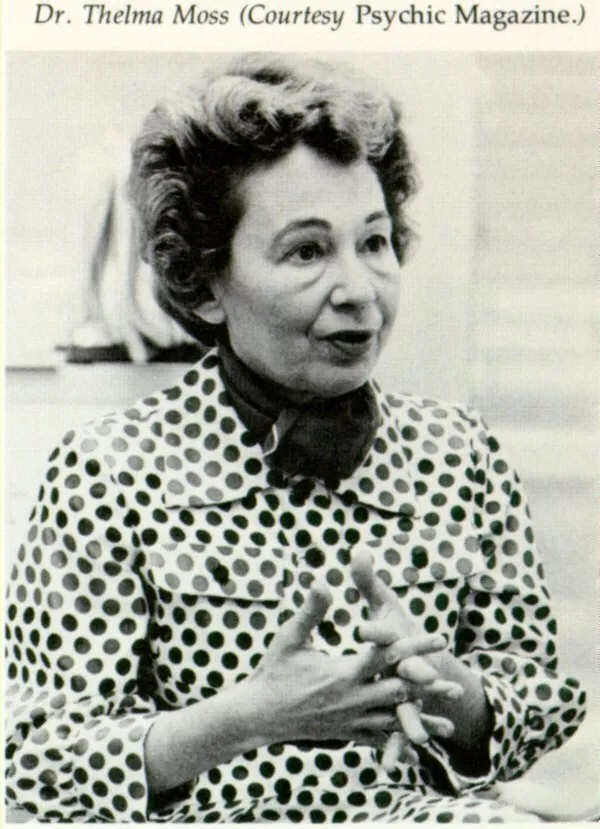by Alex
Julio Santo Domingo Jr was part of a Columbian business dynasty, straitjacketed by the trappings that came with moneyed social convention. Thoughout his life, though, he developed a seemingly insatiable appetite for collecting materials on ‘altered states’, sex, magick, and the occult, which he amassed from bookshops, auctions and galleries across the globe. Filling warehouses and mansions with rare first editions, pulp novels, letters and posters, after his death the collection was bequeathed to Harvard University, and a book appeared in 2017, Altered States, to accompany an exhibition at the Houghton Library, documenting the development of the collection and Santo Domingo’s vision and mentality.
It’s difficult to emphasise enough the sheer scale of the archive. Some estimates suggest that it numbers 100,000 individual items, and would fill at least three terraced houses. I was lucky enough to spend two weeks in October 2018, foraging for material that intertwined sexuality and drug use, but little enough time to do more than scratch the surface. One initial barrier to any archive visit is knowing what you are looking for before you arrive, and I was very lucky to have a very long list drawn up by Ben, one of my project collaborators, which gave me an instant tool to navigate the enormous volume of material. A second barrier is that the collection is housed across a number of Harvard libraries, each with its own rather complex ordering system. The Houghton, their rare books library, houses the majority of the pulp fiction and pre-1965 material, with a smattering of the latter held at Countway Medical Library on the other side of Boston. The majority of post-1950s objects are in the main library, the Widener, quite possibly the largest bibliographic complex I’ve ever entered. Those three archives alone kept me so busy I didn’t get around to looking in Schlesinger, the women’s library associated with the former Radcliffe Institute, but would prioritise on any future trip.
The material on sex and drugs is itself hugely varied, ranging from 1930s anthropological texts, to 1960s-70s small press case history books, to 50 boxes of pulp fiction, numbering over 3,000 volumes. I spent the first week predominantly exploring the rarer material held in the Houghton library, including a smattering of pulp fiction. Much of the latter is in French, though admittedly I was keen to explore the books as much for their cover art as their (rather repetitive) content. Most of the books in the pulp fiction collection concern the effects of cocaine, opium and weed, and often take the narrative form of a cautionary tale of loosening morals and escalating sexual depravity. An early example from 1938, Dark Refuge, by Charles Beadle, charts the passing of a Romanesque orgy in a bohemian Parisian mansion, where the characters’ use of opium and hash produces a kind of stream-of-consciousness convergence of voices. Beadle apparently decried the delicacy with which many of his contemporaries approached the subject of drug-addled bohemianism and happily deployed a variety of expletives – ‘cuntstruck’, ‘pussy’, ‘fuck’ – with abandon:
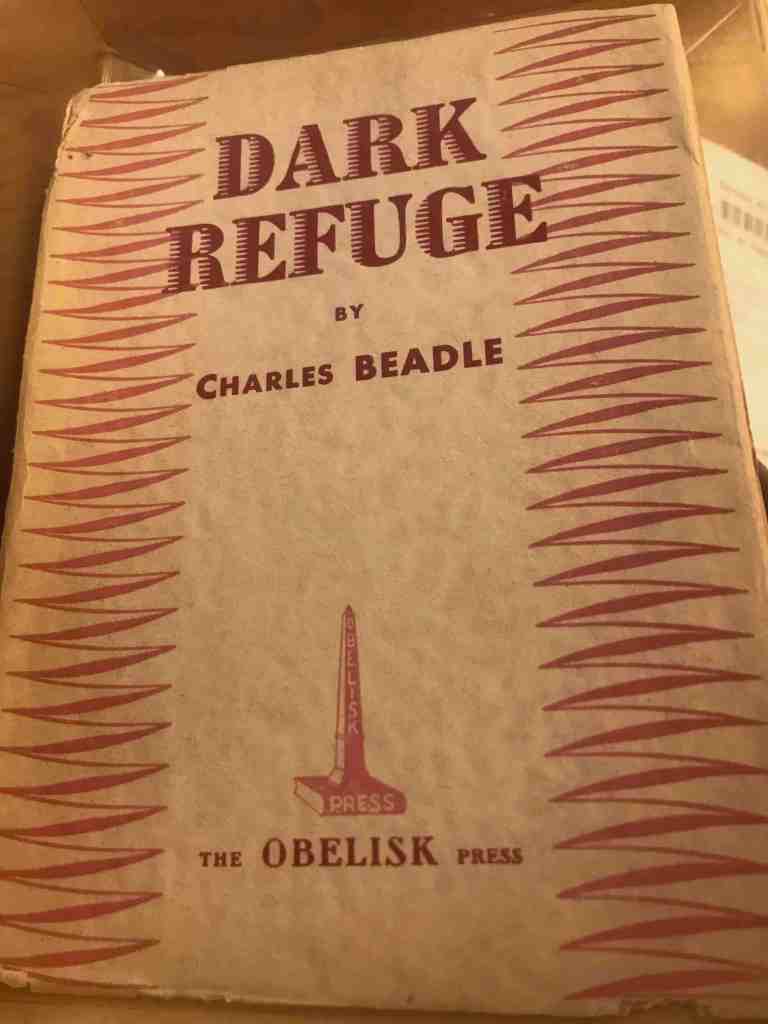
“It’s quite true that hashish does make things seem more wonderful; even a caress appears to last for hours deliciously, and the funny part is that the sensation seems alive all by itself, somehow, and – Oh! When you really make love – oh! You go on and go on and go on and just when its (sic) insupportable it fades away and you begin all over again until you feel you’re going utterly insane…” (p. 66)
A second delightful assortment of materials in Houghton is its Beat fiction and associated esoterica, including collections on Speed and letters from Jack Kerouac, William Burroughs, Lawrence Ferlinghetti and other lesser known acolytes. A highlight of this is a long form, typewritten stream-of-consciousness poem by John Keys (1960) entitled Psychedeliotropolis, or Amphetamine Fuckout on Eleventh Street:
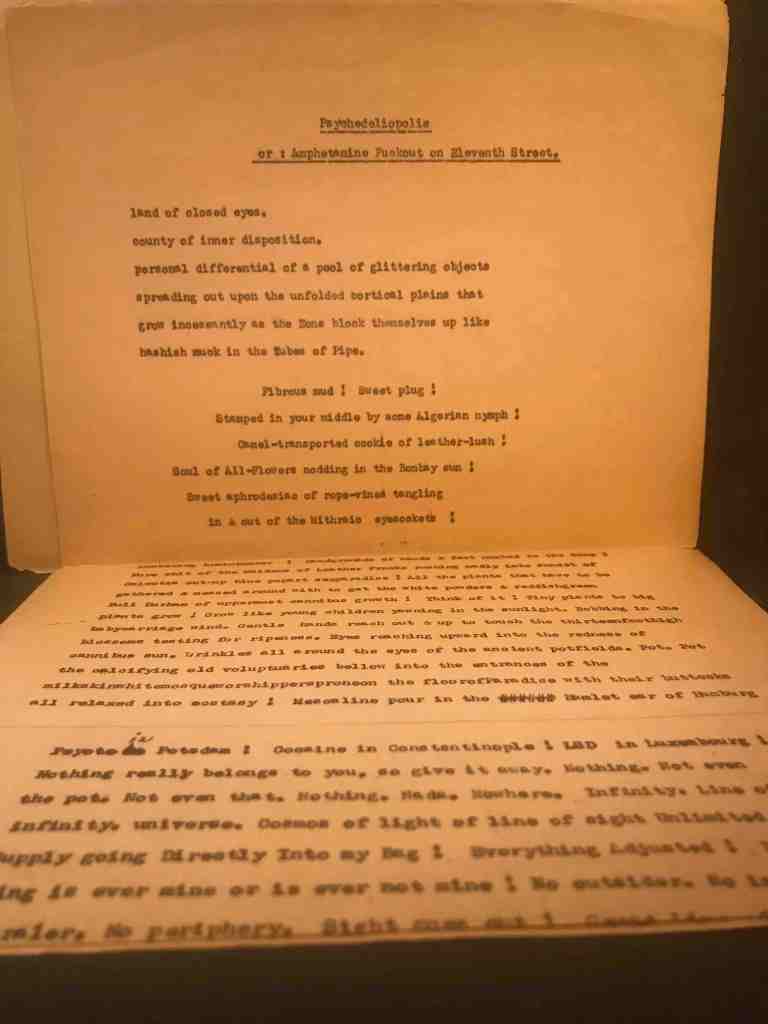
Enter a ‘Fibrous mud ! Sweet plug !
Stamped in your middle by some Algerian nymph !
Camel-transported cookie of leather lush !
Soul of All-Flowers nodding in the Bombay sun !
Sweet aphrodisiac of rope-vined tangling
In and out of the Mithraic eyesockets !’
And on it goes.
The more contemporary material from the 60s and 70s on sex and drugs includes a large number of small press ‘case history’ books. Unsurprisingly, perhaps, some of these ended up duplicated in the pulp fiction collection, and once one gets past the sensationalist cover lines (‘actual, factual case histories of kids living and loving together in the rear of a head shop. Unreal!’), it is difficult to tell sometimes where fact ends and storytelling begins. Books such as Sexual Rebellion in the Sixties (1965), Psychedelic Sex (1969) and The Psychedelic Orgasm (1969) relate the stories of youths experimenting with the outer limits of sexual and psychedelic sensation. While framed often as tales related to their doctors, and often peppered with references to medical and sociological literature of the period, these texts are a peculiar mix of documentary and pornography, sometimes accompanied by ‘exclusive photo documentation’ (ie. explicit images). The object was sale, after all.
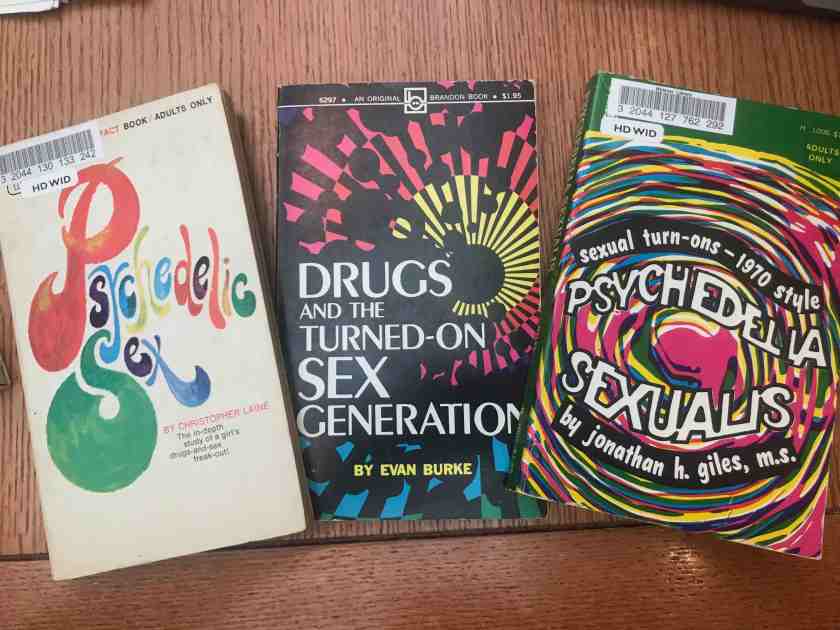
Psychedelic Sex (1969), Drugs and the Turned-On Generation (1973), Psychedelia Sexualis (1969) “It isn’t just marijuana, or sex, or peyote, or mescaline, or LSD, or prayer. It’s any or all of those, or any combination of any of them. All paths are pure, or all may be intermingled. Only the narrow mind says that only one path is pure. We all have to spread love and beauty around the world, and we have to do it by any means at our disposal” (from Psychedelic Sex, p. 151)
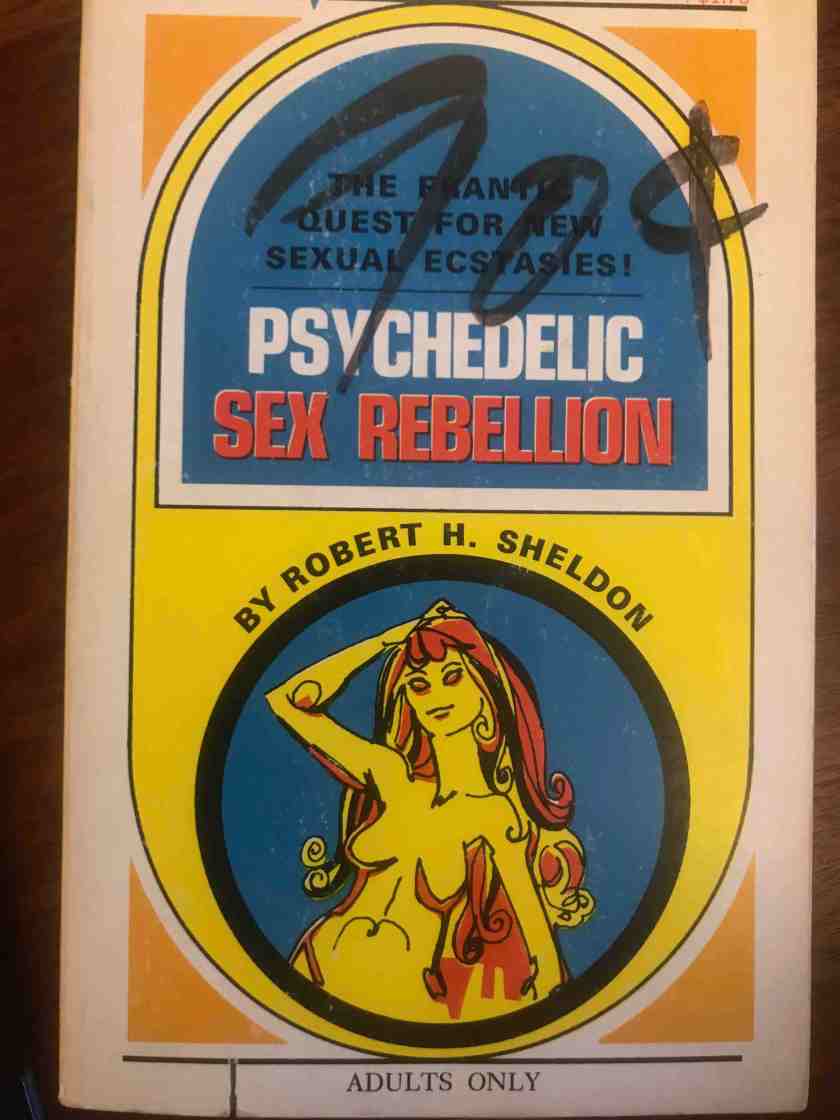
From the cover of Psychedelic Sex Rebellion (1968): ‘Helen was hooked on sex and pot at thirteen!; Wendy was a hippie whose psychedelic sex trips lasted for days!; Katie was frigid until she discovered that pleasure and pain can be the same thing…’
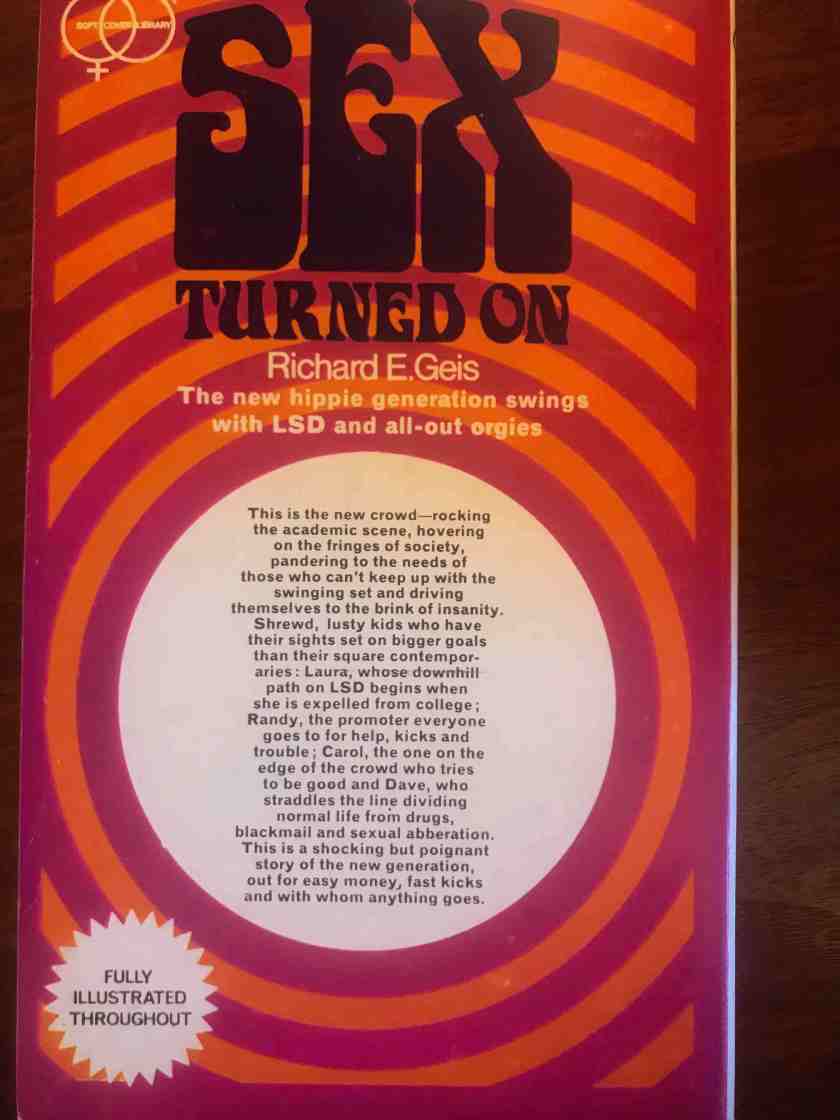
Sex Turned On (1969)
The historical element of our project focuses on two spheres of sex/drug intersection. Firstly, examining the countercultural histories of drug use in sexual contexts; and secondly, the use of psychoactive drugs in sex and/or relationship therapy. While there is a wealth of material pertaining to some of the original ‘groovy scientists’ of the 60s – Timothy Leary, in particular – there is considerably less that charts psychedelic therapy. One happy exception is the literature on MDMA and Ecstasy, and their use in therapy. A small number of books contain first-hand accounts, in some instances revealing detail about gender and age demographics, the set and setting in which the therapy took place, and the ‘catalyst’ (ie. Dosage and drug). Through the Gateway of the heart: Accounts of Experiences with MDMA and Other Empathogenic Substances (1985), by Sophia Adamson, is one such collection, including accounts by a ‘compulsive sexual masochist’ and PTSD resulting from sexual trauma.

Through the Gateway of the Heart (1985), ed. Sophia Adamson
It was a remarkable and very enjoyable two weeks, and I returned to London with a much more comprehensive sense of what shape a book on the history of sex on drugs might take. This is, of course, but a brief peek into the treasures in the Julio Santo Domingo collection, but any researcher with an interest in the history of sexuality or drugs in the twentieth century would find much to intrigue them.
